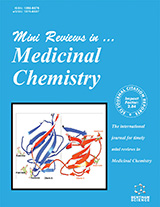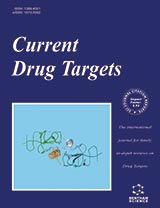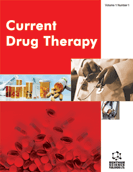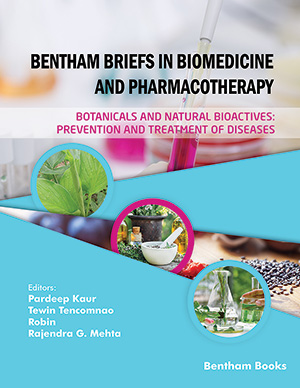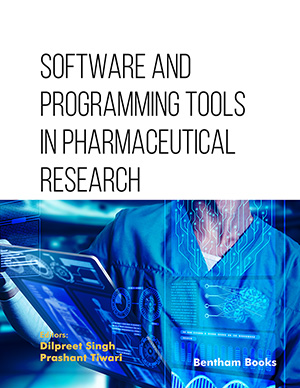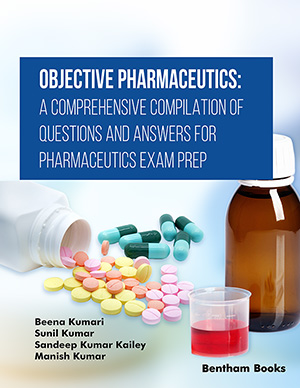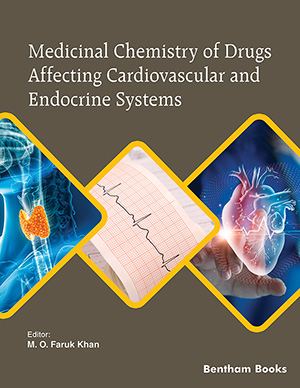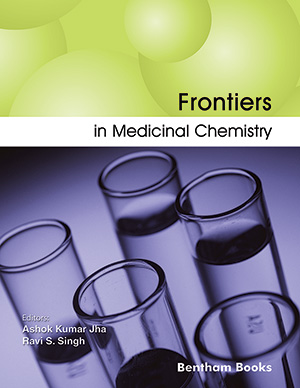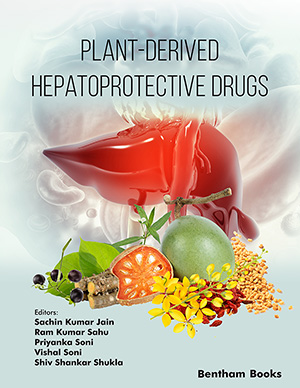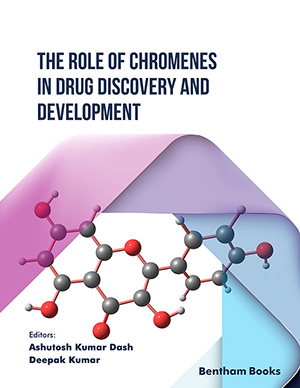Abstract
The endogenous canabinoid system (ECS) is involved in the regulation of an important number of central and peripheral physiological effects. Among all these functions, the control of the cellular proliferation has become a focus of major attention as opening new therapeutic possibilities for the use of cannabinoids as potential antitumor agents. The capacity of endogenous and synthetic cannabinoids to induce apoptosis of different tumoral cells in culture and in vivo, the mechanism underlying and the potential therapeutic applications are discussed in this review.
Keywords: endogenous cannabinoid system, cellular proliferation, antitumoral properties of cannabinoids, tumoral cells, cancer
Mini-Reviews in Medicinal Chemistry
Title: Involvement of Cannabinoids in Cellular Proliferation
Volume: 5 Issue: 1
Author(s): Maria L. Lopez-Rodriguez, Alma Viso, Silvia Ortega-Gutierrez and Ines Diaz-Laviadac
Affiliation:
Keywords: endogenous cannabinoid system, cellular proliferation, antitumoral properties of cannabinoids, tumoral cells, cancer
Abstract: The endogenous canabinoid system (ECS) is involved in the regulation of an important number of central and peripheral physiological effects. Among all these functions, the control of the cellular proliferation has become a focus of major attention as opening new therapeutic possibilities for the use of cannabinoids as potential antitumor agents. The capacity of endogenous and synthetic cannabinoids to induce apoptosis of different tumoral cells in culture and in vivo, the mechanism underlying and the potential therapeutic applications are discussed in this review.
Export Options
About this article
Cite this article as:
Lopez-Rodriguez L. Maria, Viso Alma, Ortega-Gutierrez Silvia and Diaz-Laviadac Ines, Involvement of Cannabinoids in Cellular Proliferation, Mini-Reviews in Medicinal Chemistry 2005; 5 (1) . https://dx.doi.org/10.2174/1389557053402819
| DOI https://dx.doi.org/10.2174/1389557053402819 |
Print ISSN 1389-5575 |
| Publisher Name Bentham Science Publisher |
Online ISSN 1875-5607 |
Call for Papers in Thematic Issues
Bioprospecting of Natural Products as Sources of New Multitarget Therapies
According to the Convention on Biological Diversity, bioprospecting is the exploration of biodiversity and indigenous knowledge to develop commercially valuable products for pharmaceutical and other applications. Bioprospecting involves searching for useful organic compounds in plants, fungi, marine organisms, and microorganisms. Natural products traditionally constituted the primary source of more than ...read more
Computational Frontiers in Medicinal Chemistry
The thematic issue "Computational Frontiers in Medicinal Chemistry" provides a robust platform for delving into state-of-the-art computational methodologies and technologies that significantly propel advancements in medicinal chemistry. This edition seeks to amalgamate top-tier reviews spotlighting the latest trends and breakthroughs in the fusion of computational approaches, including artificial intelligence (AI) ...read more
Mitochondria as a Therapeutic Target in Metabolic Disorders
Mitochondria are the primary site of adenosine triphosphate (ATP) production in mammalian cells. Moreover, these organelles are an important source of reactive oxygen and nitrogen species in virtually any nucleated cell type. The modulation of a myriad of cellular signaling pathways depends on the mitochondrial physiology. Mitochondrial dysfunction is observed ...read more
Natural Products and Dietary Supplements in Alleviation of Metabolic, Cardiovascular, and Neurological Disorders
Metabolic disorders like diabetes, obesity, inflammation, oxidative stress, cancer etc, cardiovascular disorders like angina, myocardial infarction, congestive heart failure etc as well as neurological disorders like Alzheimer?s, Parkinson?s, Epilepsy, Depression, etc are the global burden. They covered the major segment of the diseases and disorders from which the human community ...read more
 16
16
- Author Guidelines
- Graphical Abstracts
- Fabricating and Stating False Information
- Research Misconduct
- Post Publication Discussions and Corrections
- Publishing Ethics and Rectitude
- Increase Visibility of Your Article
- Archiving Policies
- Peer Review Workflow
- Order Your Article Before Print
- Promote Your Article
- Manuscript Transfer Facility
- Editorial Policies
- Allegations from Whistleblowers
Related Articles
-
Management of Unusual Not Scar Ectopic Pregnancy: A Multicentre Retrospective
Case Series
Current Women`s Health Reviews Pharmacological Interference With Protein-protein Interactions of Akinase Anchoring Proteins as a Strategy for the Treatment of Disease
Current Drug Targets Novel Nucleic Acid-Based Agents: siRNAs and miRNAs
Central Nervous System Agents in Medicinal Chemistry Polyphenols: Biological Activities, Molecular Targets, and the Effect of Methylation
Current Molecular Pharmacology LRIGs: A Prognostically Significant Family with Emerging Therapeutic Competence against Cancers
Current Cancer Drug Targets Quality Survival with Fertility after Gynaecological and other Cancers
Current Women`s Health Reviews Cryptotanshinone Induces Pro-death Autophagy through JNK Signaling Mediated by Reactive Oxygen Species Generation in Lung Cancer Cells
Anti-Cancer Agents in Medicinal Chemistry Tumour Hypoxia and Technetium Tracers: In Vivo Studies
Current Radiopharmaceuticals Spirooxindoles as Potential Pharmacophores
Mini-Reviews in Medicinal Chemistry Animal Mitochondria: Evolution, Function, and Disease
Current Molecular Medicine Erythropoietin in Cancer: An Update
Current Molecular Medicine Novel Metals and Metal Complexes as Platforms for Cancer Therapy
Current Pharmaceutical Design Metal Complexes, their Cellular Targets and Potential for Cancer Therapy
Current Pharmaceutical Design Advances in Neuroimaging for HIV-1 Associated Neurological Dysfunction: Clues to the Diagnosis, Pathogenesis and Therapeutic Monitoring
Current HIV Research AAVs Anatomy: Roadmap for Optimizing Vectors for Translational Success
Current Gene Therapy Nutritional Attributes and Health Application of Seabuckthorn (<i>Hippophae rhamnoides</i> L.) – A Review
Current Nutrition & Food Science Quercetin in Cancer Treatment, Alone or in Combination with Conventional Therapeutics?
Current Medicinal Chemistry Free Flap Head and Neck Reconstruction After Cancer Therapy: Current State of the Art
Current Cancer Therapy Reviews Low Utility in Colposcopy-directed Biopsies for Non-high Grade Cytological Abnormalities on PAP Smear
Current Women`s Health Reviews Targeting Tumor Suppressor p53 for Cancer Therapy: Strategies, Challenges and Opportunities
Current Drug Targets


